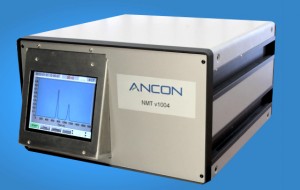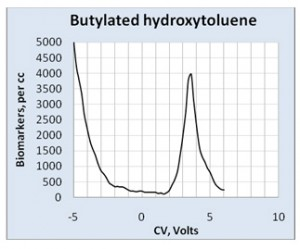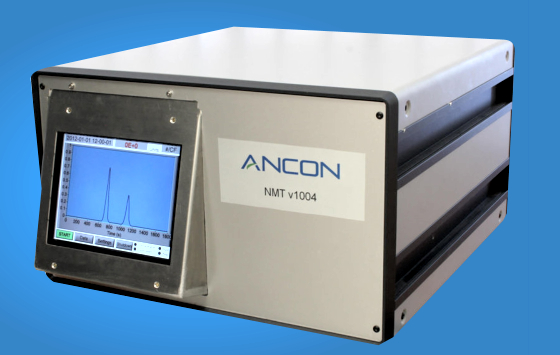 A new, non-invasive lung screening technology developed by American medical device maker Ancon Medical Inc. offers the capability to detect presence of early-stage lung cancer at a fraction of the cost of conventional methods. Ancon, based in Minnesota’s “LifeScience Alley” at Bloomington, seeks funding necessary to finalize and ramp up production of its Nanoparticle Biomarker Tagging (NBT) device, heralded as a better and cheaper alternative than CT scans that works by detecting a variety of infectious diseases and viruses by analyzing gaseous elements in a patient’s breath.
A new, non-invasive lung screening technology developed by American medical device maker Ancon Medical Inc. offers the capability to detect presence of early-stage lung cancer at a fraction of the cost of conventional methods. Ancon, based in Minnesota’s “LifeScience Alley” at Bloomington, seeks funding necessary to finalize and ramp up production of its Nanoparticle Biomarker Tagging (NBT) device, heralded as a better and cheaper alternative than CT scans that works by detecting a variety of infectious diseases and viruses by analyzing gaseous elements in a patient’s breath.
Early detection is important with any cancer, but especially crucial in lung cancer, where detection of which can be a challenge for medical professionals since standard x-rays are ineffective at finding lung cancer tumors in their earliest stages when the best opportunity for cure of the disease exists. And while low-dose CT scans can find lung cancer, these devices also expose individuals to dangerous levels of radiation. Results of a new study published Nov. 5 by The New England Journal of Medicine demonstrate that screening with computed tomography (CT) scans can combine cost-effectiveness with low risk, non invasiveness, and life-saving functionality.
The study, entitled “Lung-Cancer Screening with Low-Dose Computed Tomography” (N Engl J Med 2014; 371:1813-1820November 6, 2014DOI: 10.1056/NEJMcp140407 authored by Michael K. Gould, M.D., describes a large randomized trial that showed that low-dose CT screening reduced lung-cancer death risk by 20 percent among long-time smokers. He notes that recent guidelines support consideration of screening, with the caveat of the possible false positive results and risks associated.
“Ancon Medical’s NBT device is a much better alternative than CT scans early on and far cheaper too,” says Ancon Medical president Wesley Baker, in a release. “It can screen a wide range of at-risk individuals, allowing doctors to discover the presence of lung cancer at an early state. For many, once lung cancer is diagnosed, it is too late, as more than half die within one year.”
[adrotate group=”3″]
“The only thing preventing Ancon Medical from further developing its NBT device is financial resources needed,” adds Mr. Baker. The device’s NBT technology works by detecting “biomarkers” — DNA-protein controlled volatile organic compound (VOC) metabolites specific to certain diseases in the patient’s exhalations. Exhaled breath contains a complex mixture of various molecules and importantly specific molecules produced by body fluids in various body compartments or emitted by bacteria. The biomarkers are unique signatures of diseases and conditions, e.g. lung cancer cells emit certain specific biomarkers — “fingerprints” of a disease, so to speak that can be used to detect particular diseases and conditions. NBT is claimed to be more sensitive at detecting these biomarkers than any other technology including current screening methods.
However, the number of biomarker molecules is relatively small, so the challenge is to quantify trace biomarker presence against the against a background of atmospheric air containing vast numbers of other molecules, eg: Nitrogen, Oxygen, Carbon Dioxide, and so forth.
Ancon notes that research analyzing the contents of exhaled breath have identified specific biomarkers for various diseases (including lung cancer and tuberculosis), and that breath detection’s reliability has been proven in direct tests going head-to-head with chest CT scans as a reference method for early  lung cancer detection of in multiple lung cancer screening trials, which pave the way for wider employment of breath tests for clinical diagnoses. For example, Butylated hydroxytoluene is a lung cancer biomarker molecule whose presence in exhaled breath can be detected by NBT technology for the diagnosis of lung cancer in a simple test that requires only a few minutes to administer.
lung cancer detection of in multiple lung cancer screening trials, which pave the way for wider employment of breath tests for clinical diagnoses. For example, Butylated hydroxytoluene is a lung cancer biomarker molecule whose presence in exhaled breath can be detected by NBT technology for the diagnosis of lung cancer in a simple test that requires only a few minutes to administer.
Ancon says NBT offers sensitivity and selectivity sufficient to identify and quantify lung cancer biomarkers in exhaled breath even at the disease’s earliest stage when biomarker volume present is billions of times smaller than the number of air molecules, and that its technology is far superior to all other current technologies for quantifying trace compound present in the air. For example, they say NBT’s sensitivity is a million times greater than other gas analysis techniques like Gas Chromatography Mass Spectrometry (GCMS) .
Ancon’s NBT device is a portable laboratory in a desktop enclosure, incorporating the staged manipulation of biomarkers at the molecular level that enables its unprecedented performance. NBT technology’s extreme sensitivity is based on physical amplification of biomarker molecules to more than 1 billion times in mass, to sizes either visible or easily detectable with an inexpensive laser counter.
Ancon explains that NBT is essentially a novel way of ion detection by direct digital ion counting, which allows detection and identification of single ions and molecules, and that these cutting edge techniques nevertheless possess an elegant simplicity that allows NBT technology to be widely affordable at only a fraction of the cost of incumbent mainstream screening technologies.
They report that their technology’s unique sensitivity was demonstrated in Boulby Underground Laboratory, the UK’s deep underground science facility, located 1100m below ground in Boulby Mine on the North East coast of England. Down in the mine there are no cosmic rays or other ionizing radiation, and in August 2012 the NBT detector’s low detection limit was measured to be 1 ion in 10,000 cubic centimeters — at which single ion and single molecule detection becomes reality.
For example, Ancon cites their NBT technology’s performance of as being considerably better than performance of a Faraday cup whose detection limit is 10,000 ions per second. Wilson chamber technology is widely employed in nuclear physics, which also requires tens to hundreds of thousands of ions (10,000 to 100,000) to produce a detectable signal, and mass-spectrometer sensitivity is even worse because it is considerably reduced by the air-vacuum interface resulting in ppb level of detection in the air.
Ancon observes that combining NBT technology with commercially available ion selecting techniques such as Field Asymmetric Ion Mobility Spectrometry (FAIMS) or Ion Mobility Spectrometry (IMS) enhances its selectivity, and that for example, recently, lung cancer and tuberculosis biomarkers of have been detected by FAIMS-enhanced NBT.
The company reports that funding has been received from the U.K.’s Technology Strategy Board (TSB) and the South East England Development Agency (SEEDA) to pioneer NBT use of in medicine, life science and other areas.
Dr. Gould reports as potential conflicts of interest relevant to this article receiving salary support from healthcare modeling and analytics company Archimedes Inc. to help develop lung-cancer screening computer models , serving as a guest member of the Medicare Evidence Development and Coverage Advisory Committee for lung-cancer screening, and participating in development of Lung-RADS for the American College of Radiology.
For more information, visit:
http://www.anconmedical.com
Sources:
Ancon Medical
New England Journal of Medicine
Image Credits:
Ancon Medical


